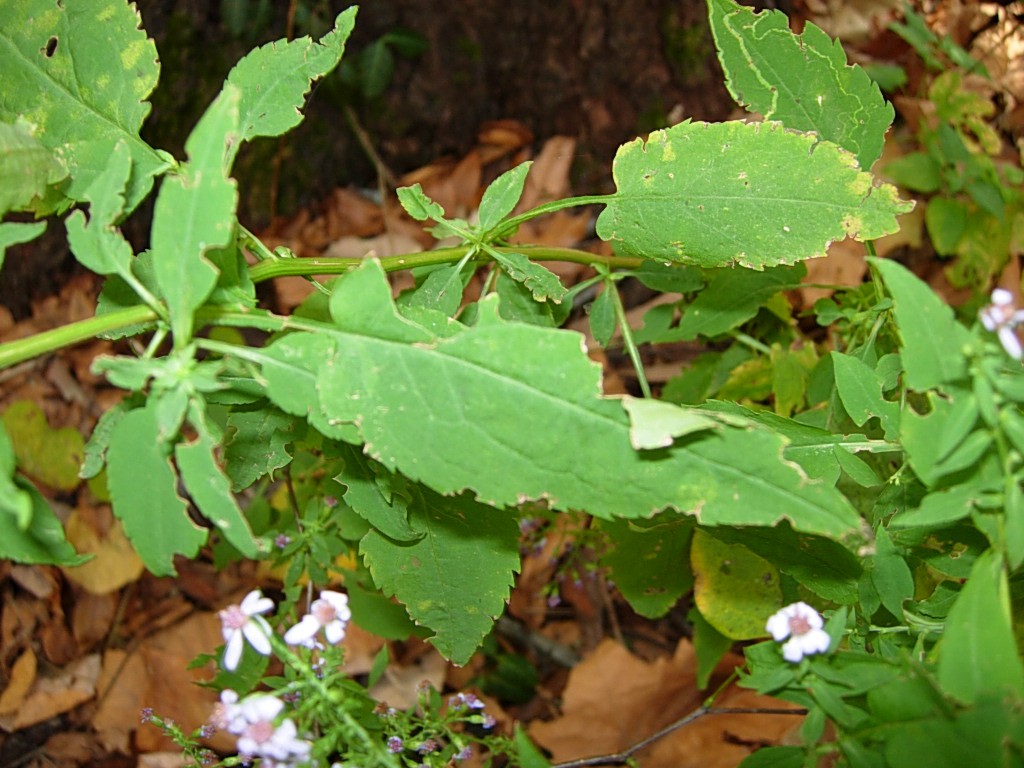Some of the showiest late-blooming wildflowers in our area are blue wood asters. They are a bit past prime right now, but can still be seen. These plants like edges of woods but they do quite will in gardens. I transplanted one to my yard a few years ago and now have many plants, including some coming up in our sparse backyard grass. They spread by wind-dispersed seeds that have small dandelion-like plumes (they are in the same family). In Indianapolis, there is a nice stand at Westfield Boulevard and Boulevard Place along the canal.
Asters are in the sunflower or daisy family. What looks like individual flowers in this group are actually clusters of small flowers. Flowering heads of purple wood asters are bluish-lavender, with central disk flowers that turn from yellow to a reddish-purple. Leaves are heart-shaped with distinctive wings along the edges of the petioles, the parts that attach the leaf to the plant.
There are several very similar species of blue asters in Central Indiana. They are tricky to tell apart and I think they may hybridize, making it even harder to tell what is what.
Aster is such a nice, straightforward plant name, used both as a common name and a genus name. Unfortunately, botanists have recently rethought the nature of the genus and have largely accepted a treatment that splits Aster into several genera and puts most of Indiana’s native asters in the genus Symphotrichum. Thus, blue wood aster, Aster cordifolius is now to be known as Symphotrichum cordifolium.


